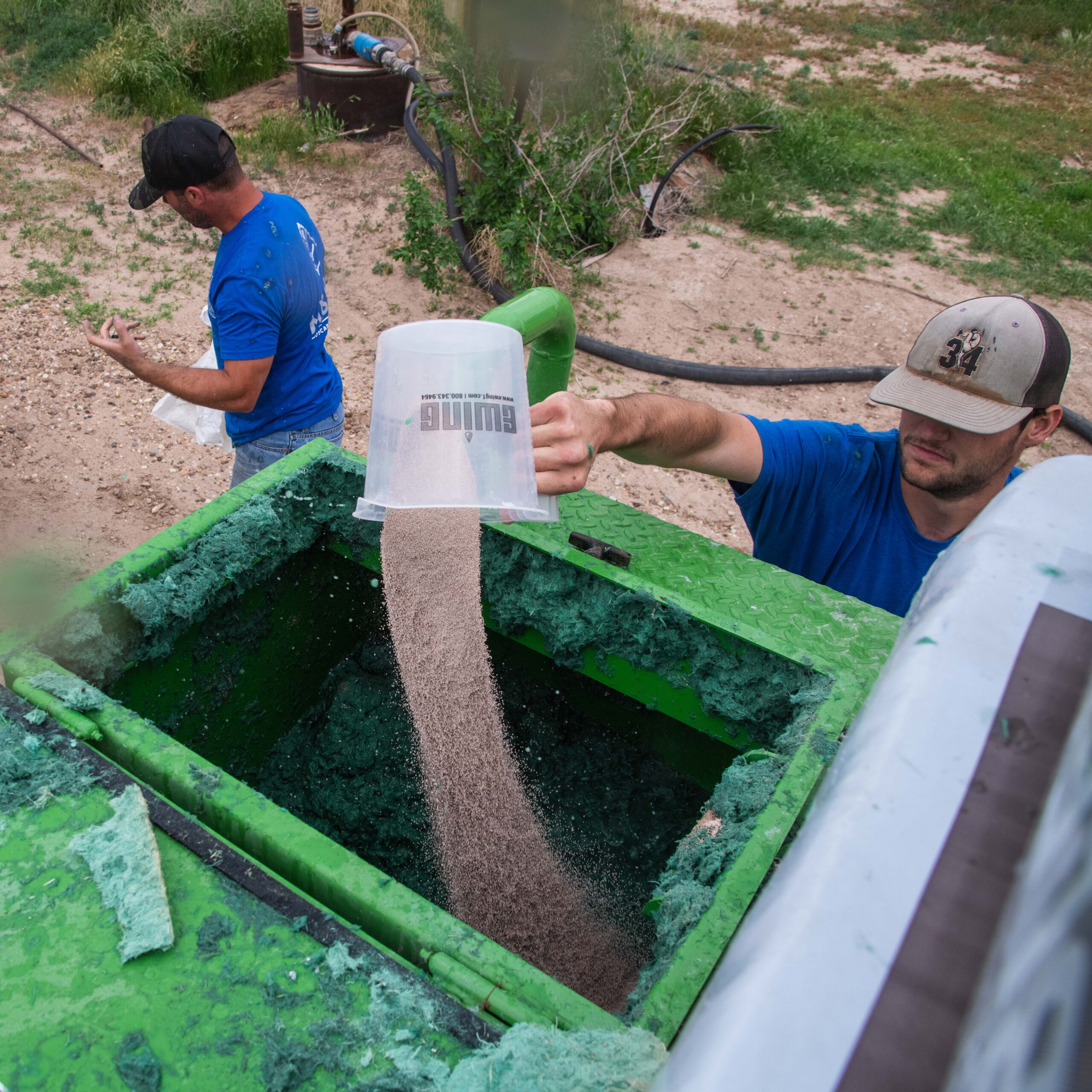Caring for hydromulch (also known as hydroseeding) after it is installed in West Texas is crucial to ensure successful growth of the seeded area. Hydromulch is a mixture of water, seed, fertilizer, and mulch that is sprayed onto the ground to promote grass and plant growth. Here are instructions for caring for hydromulch in the West Texas climate:
1. Initial Watering
After hydromulch is applied, water the area lightly and evenly to ensure the seeds and mulch are properly hydrated. Use a sprinkler system or hose with a gentle spray nozzle.
Water enough to keep the hydromulch consistently moist but not waterlogged. Avoid creating puddles or runoff.
2. Watering Schedule
In West Texas, where temperatures can be high and rainfall is often scarce, you’ll need to water regularly to keep the hydromulch moist.
Initially, water daily or as needed to maintain moisture for the first 2-4 weeks.
After the first month, reduce watering frequency to 2-3 times a week, depending on local weather conditions.
3. Watering Time
To prevent excessive evaporation, water in the early morning or late evening when temperatures are cooler.
Watering during the hottest parts of the day can lead to water loss through evaporation.
4. Depth of Watering
Water deeply to encourage root growth. Aim for about 1 inch of water per week.
Check the soil moisture regularly by digging a small hole near the center of the seeded area. The soil should be consistently moist down to the root level.
5. Fertilization
Hydromulch typically contains some fertilizer, but after the first month, consider applying a slow-release, balanced fertilizer to promote healthy growth. Follow the manufacturer’s instructions for application rates.
6. Weed Control
Keep an eye out for weeds and remove them as soon as they appear. Weeds can compete with the newly established grass for nutrients and sunlight.
7. Mowing
Once the grass has reached a height of 3-4 inches, you can begin mowing. Be sure not to cut more than one-third of the grass height at a time to avoid stressing the young plants.
8. Pest and Disease Management
Monitor the area for signs of pests or diseases, such as brown spots, discoloration, or holes in the leaves. If you notice any issues, consult with a local garden center or extension office for appropriate treatment options.
9. Gradual Transition
As the grass matures and becomes established, gradually reduce the frequency of watering to encourage deep root growth and drought tolerance.
10. Patience
Be patient. It can take several months for the grass to fully establish and cover the area.
Remember that the specific care requirements may vary depending on the type of grass or plants you’ve seeded with the hydromulch, so it’s a good idea to consult with a local nursery or agricultural extension office for guidance tailored to your specific situation and the local climate in West Texas.

Be The First To Comment